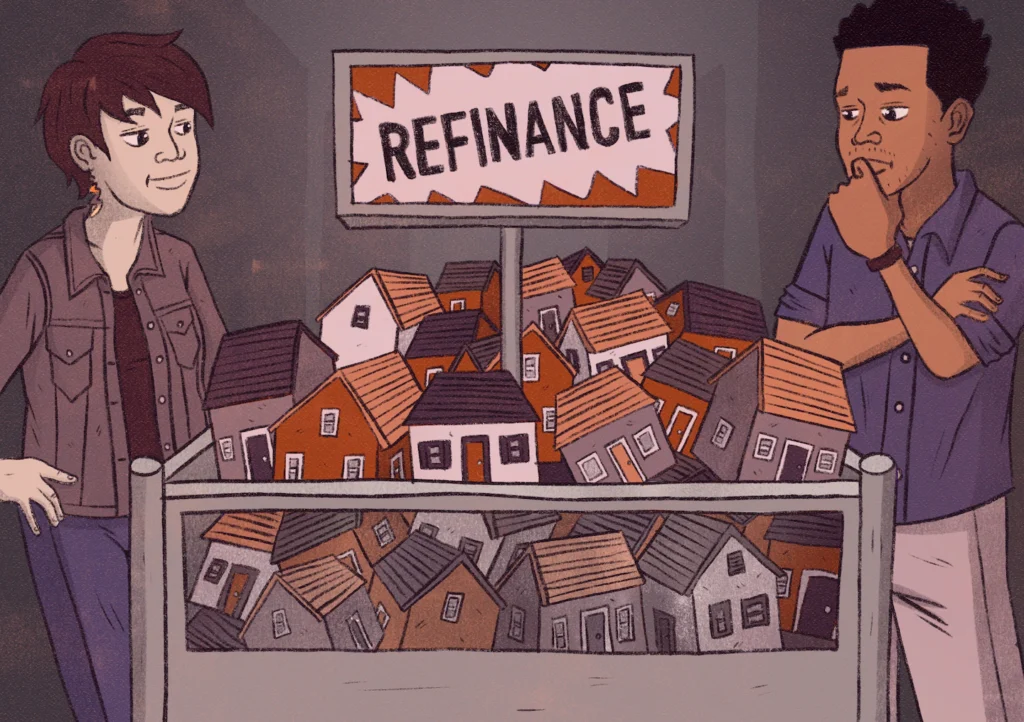
Freddie Mac, the federally chartered mortgage investor, aggregates rates from some 80 lenders across the country to come up with weekly national averages. The survey is based on home purchase mortgages. Rates for refinances may be different. It uses rates for high-quality borrowers who have strong credit scores and make large down payments. Because of the criteria, these rates are not available to all borrowers.
The 15-year fixed-rate average rose to 4.4 percent with an average 0.9 point. It was 4.38 percent a week ago and 2.31 percent a year ago. The five-year adjustable rate average ticked up to 3.78 percent with an average 0.3 point. It was 3.75 percent a week ago and 2.64 percent a year ago.
“After rapidly accelerating in the first three months of the year, mortgage rates are still rising — just not as fast,” said Holden Lewis, a home and mortgage expert at NerdWallet. “The Federal Reserve is expected to raise short-term interest rates by half a percentage point next week. That’s twice as big as the typical Fed increase, and the predicted rise already has been built into mortgage rates.”
When the Federal Reserve meets next week, officials are expected to raise the benchmark rate again. In March, the central bank took its first steps toward bringing down inflation by raising the federal funds rate by a quarter-percentage point, the first rate increase since 2018.
In the six weeks following that increase, the 30-year fixed-rate average has risen by nearly a percentage point, from 4.16 percent to 5.1 percent. Although events — Russia’s war in Ukraine, covid lockdowns in China, fears of a recession — could overtake the Fed’s actions, mortgage rates are unlikely to reverse course soon. The Federal Reserve does not set mortgage rates, but its actions influence them.
Besides raising the federal funds rate, the Fed also is expected to announce its plans for reducing its balance sheet. How quickly it sheds mortgage-backed securities from its portfolio may also affect how rapidly mortgage rates rise.
“Investors appear to be pricing in 50-basis-point rate hikes in each of the next four Federal Open Market Committee meetings,” said Paul Thomas, the vice president for capital markets at Zillow. “Fixed-income markets remain volatile as investors balance the timing and amount of Federal Reserve action against the risks of a near-term recession, along with uncertainty in Ukraine and potential impacts to the global economy.”
It is not only rising rates that are making home loans more expensive. As of April 1, the Federal Housing Finance Agency implemented a fee increase for some Fannie Mae and Freddie Mac home loans. Mortgages that the FHFA considers “high balance” or mortgages for second homes are now more expensive.
High-balance loans are mortgages above the conforming national baseline limit ($647,200). Fees for high-balance loans increased between 0.25 percent and 0.75 percent, tiered by loan-to-value ratio. Fees for second home loans increased between 1.125 percent and 3.875 percent, tiered by loan-to-value ratio.
Bankrate.com, which puts out a weekly mortgage rate trend index, found the experts it surveyed split on where rates are headed in the coming week. Forty-four percent say rates will go up, 33 percent say they will go down and 22 percent say they will remain about the same.
Dick Lepre, a senior loan officer at RPM Mortgage, doesn’t expect rates to move much in the coming week.
“Uncertainty rules and improvements in yields may only be corrections to a massively oversold market,” Lepre said. “There is no sign that inflation is abating, and the longer-term trend is still to higher yields on debt.”
On the other hand, Ken H. Johnson, a real estate economist at Florida Atlantic University, predicts that rates will go down.
“Shakiness in the equity markets is driving capital into the bond markets,” Johnson said. “This is causing yields to decline in bonds. Ten-year Treasury notes are no exception. Thus, lower yields in 10-year Treasurys will lead to lower mortgage rates. Long-term mortgage rates should decline slightly next week.”
Meanwhile, mortgage applications were down again last week. The market composite index — a measure of total loan application volume — decreased 8.3 percent from a week earlier, according to data from the Mortgage Bankers Association.
The refinance index fell 9 percent and was 71 percent lower than a year ago. The purchase index dropped 8 percent. The refinance share of mortgage activity accounted for 35 percent of applications.
“Mortgage rates are now more than two percentage points higher than a year ago and have increased for seven consecutive weeks, which has led to a significant decline in refinance applications,” said Bob Broeksmit, the MBA’s president and chief executive.
“Refinances last week made up only 35 percent of all applications, down from 61 percent a year ago. Housing demand during the spring buying season is strong throughout the country, but higher rates and steep home-price appreciation are increasingly becoming a significant hurdle for some prospective buyers. Purchase activity declined once again on a weekly and annual basis.”

